From sowing to flowering
Anyone who, like me, has been cultivating orchids for a long time will want to propagate their orchids at some point. The simplest way to do this is to divide your plants. But if more plants are needed, or if you want to preserve species, only pollination with subsequent sowing remains as propagation.
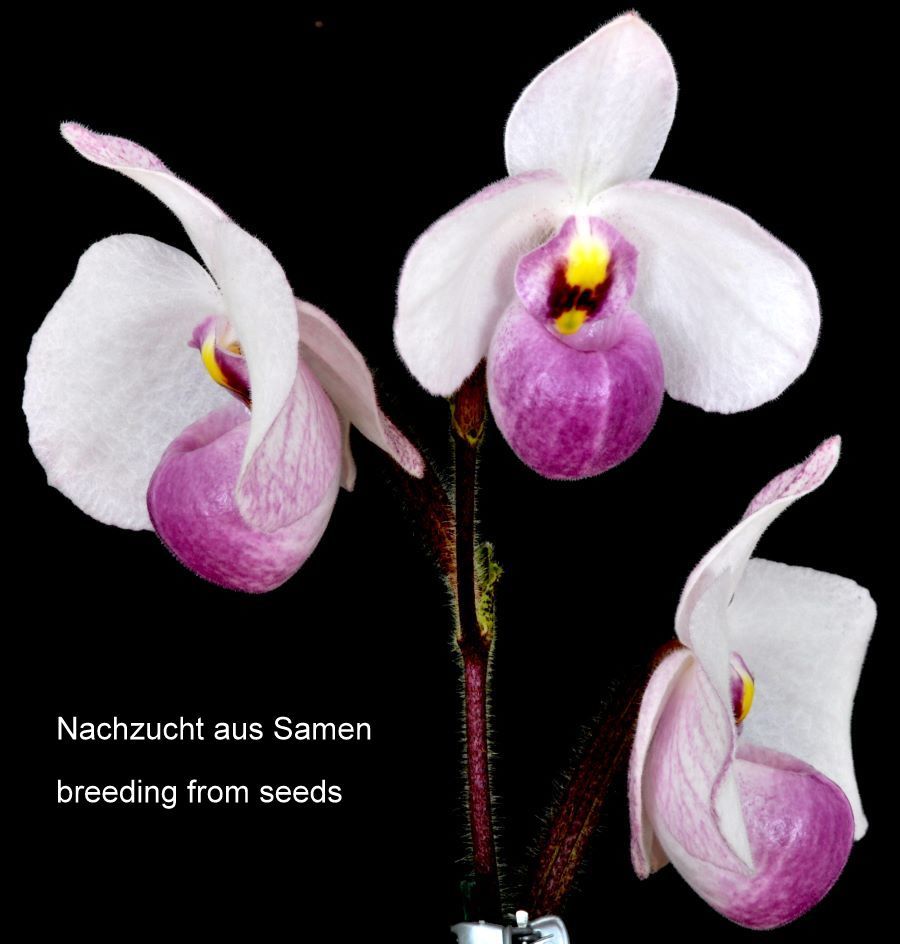
In contrast to almost all other plants, orchids do not have any nutrient reserves in the seed, as is known from other seeds. They can therefore only germinate if they are either supplied with nutrients artificially or live in symbiosis with special fungi, which then split up nutrients from the substrate at their natural location for them. During this phase, however, they are very susceptible and can be damaged or overgrown by other fungi, germs and pathogens in a very short time.
At a meeting of our regional orchid group in Hanover in the 1980s, I met Burkhard Gralher, who had sowed Disa uniflora in his orchid greenhouse in a small peat bed and had germinated almost 100 plants, which then also grew well there.
During a visit to his orchid greenhouse, I found out that Burkhard, unlike many other plant lovers, has not just one, but two green thumbs. Many Odontoglossum natural forms and hybrids were found in his plant stock, but also various Miltoniums. At that time you could buy colorful Odontoglossum hybrids from the orchid dealer Arthur Elle in Hambühren (Germany).
Mr. Elle encouraged Burkhard to try raising Ododontglossum seeds. Burkhard experimented in a small CleanBench in his kitchen and the first successes were quickly achieved. The first offspring of natural forms or own crossings filled more and more seed jars and quickly there were space problems.
Due to changes in personal circumstances, Burkhard moved with his family to his parents' house with a very large garden. Due to the renovation work in the house and the extensive garden design, the sowing of orchids was suspended for a few years. The orchid population in his greenhouse also changed from Odontoglossum to Phalaenopsis and Cattleya to Paphiopedilum.
After the import of Paphiopedilum was severely restricted by the CITES agreement in the 1970s, Burkhard came up with the idea of working even more intensively on sowing lady's slipper orchids. This has turned into a second passion to this day - in addition to a successful culture of seedlings and mother plants.
Here, too, success was quickly achieved, the free space in the own greenhouse was quickly occupied by the offspring.

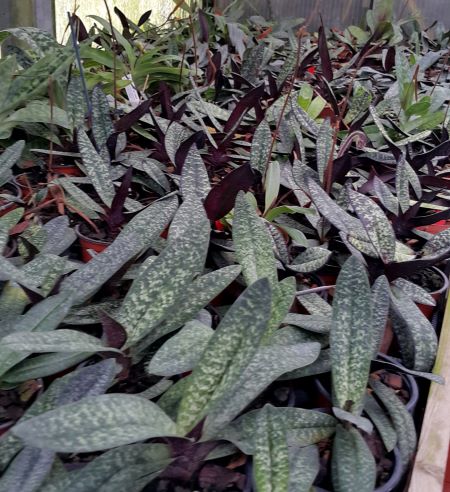
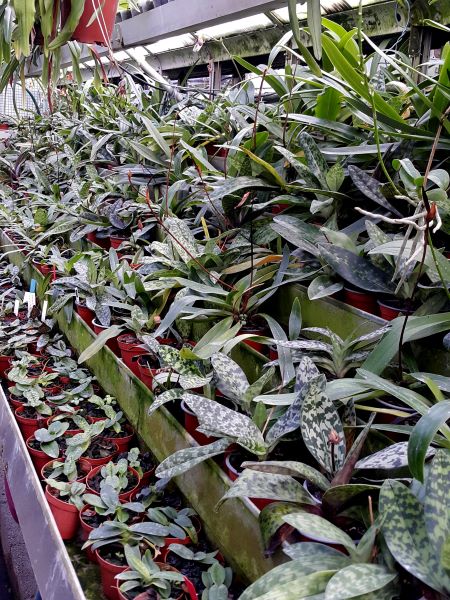
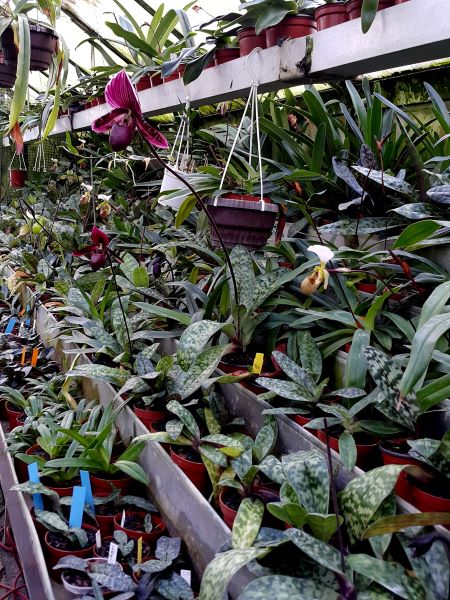
However, not all of the many seedlings could be raised by the family themselves. That's why Burkhard's partner Gabriela Gufrovičová set up a small sales shop, which sells both bottled goods and young plants that have been grown. So far, the offspring have been offered on Ebay, a sales shop on the Internet is currently under construction:
Rückfragen per Mail:
The life cycle and in vitro propagation of an orchid: here Paphiopedilum
Suitable parents (here: Paph. acmodontum) must be found – selfing (a plant is pollinated with its own pollen) is only carried out in exceptional cases or when albino plants are bred.
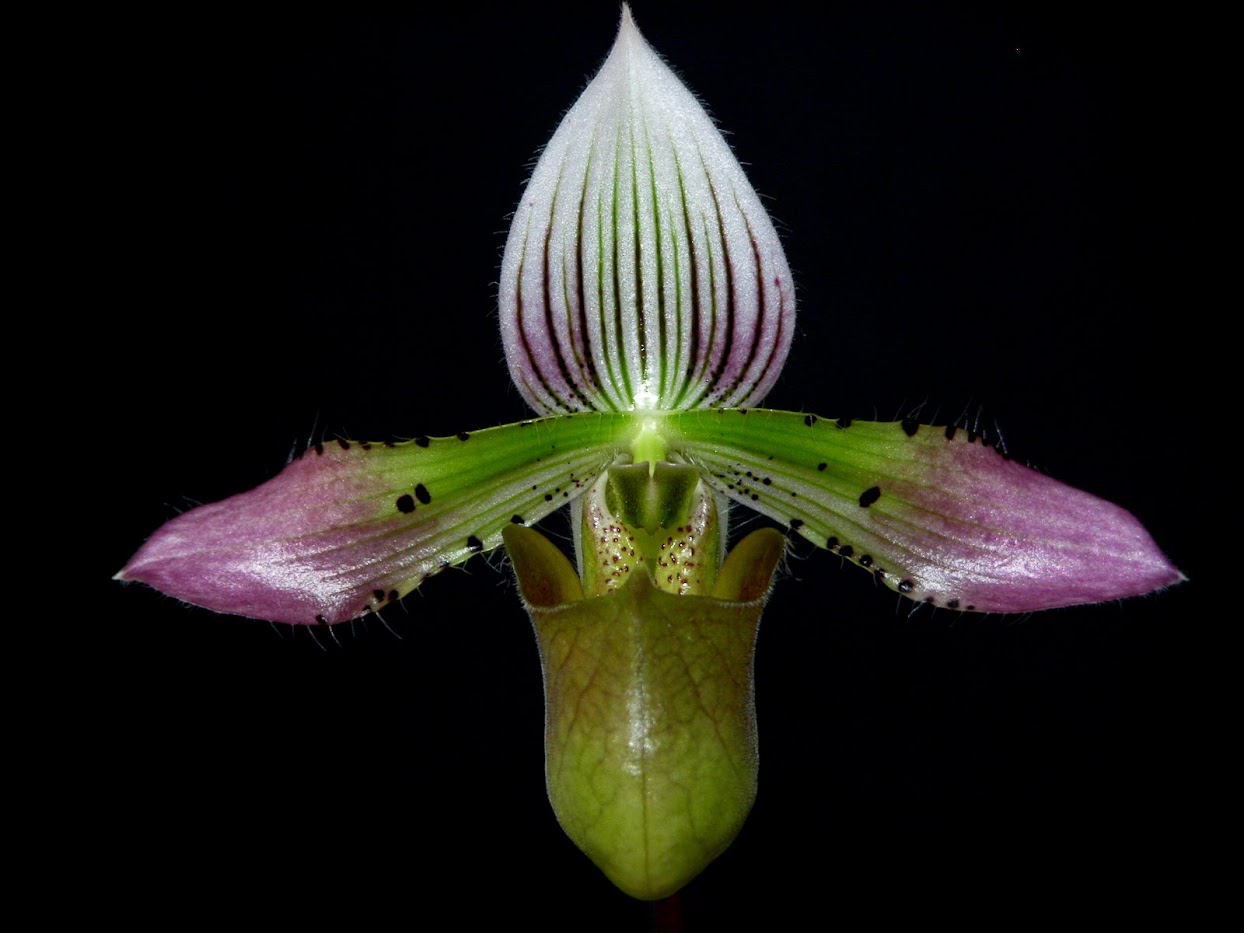
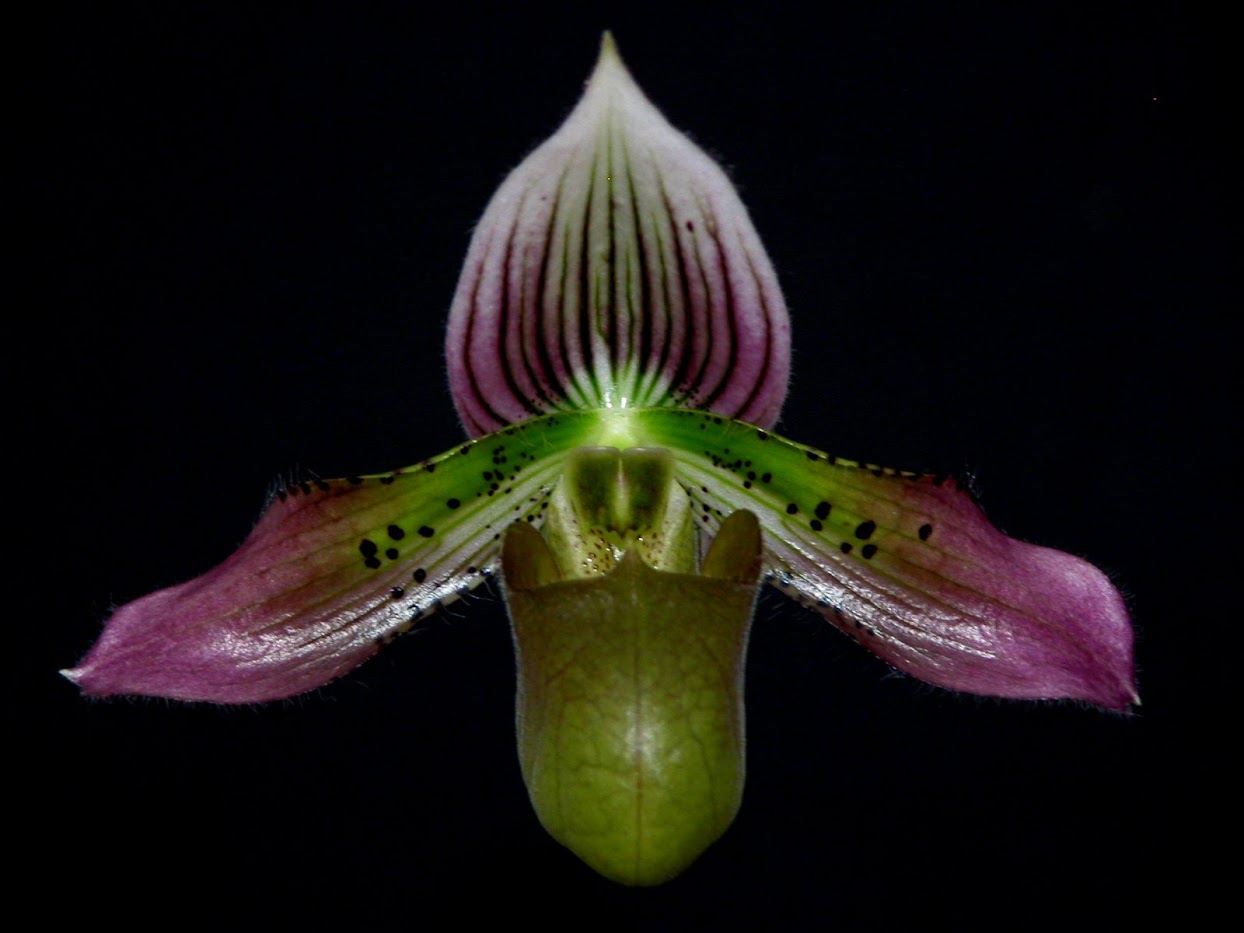
For better pollination, the shoe is removed, the flower quickly withers after successful pollination and the seed pod grows.
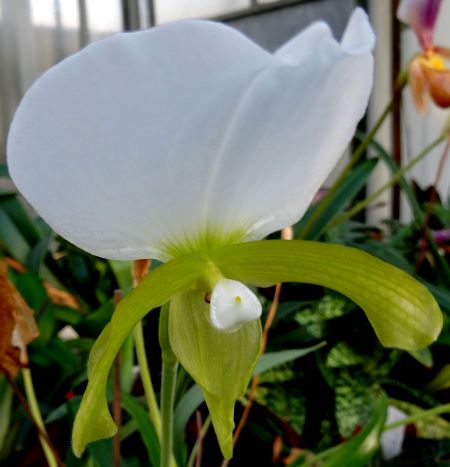
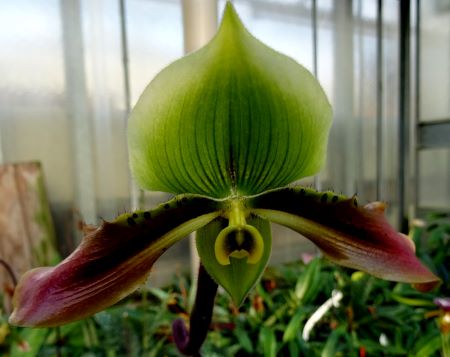
After a ripening period of 6-8 months, the seed capsule is removed. The seed of lady's slipper orchids is surrounded by a particularly strong shell that can be "popped up" with a short vacuum treatment in a so-called vacuum frit. The seeds are then sown on a seed medium under sterile conditions in the CleanBench.
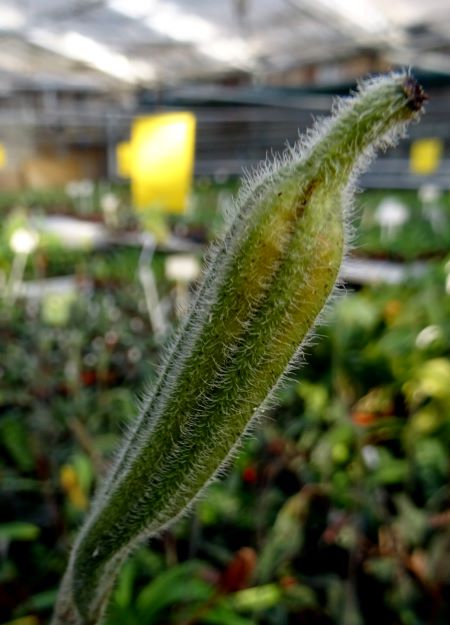
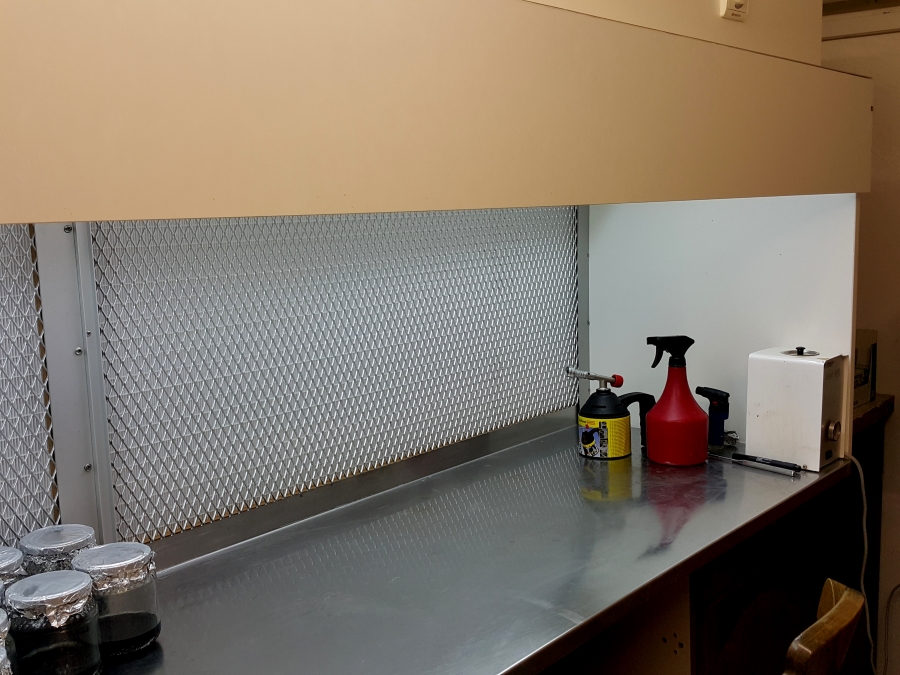
It can take a few weeks to months for the seeds to germinate.
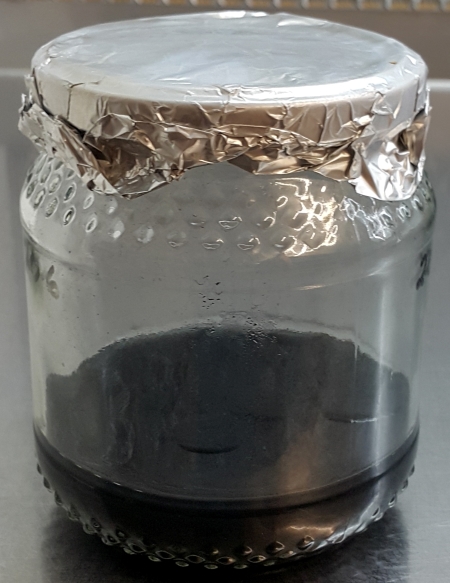
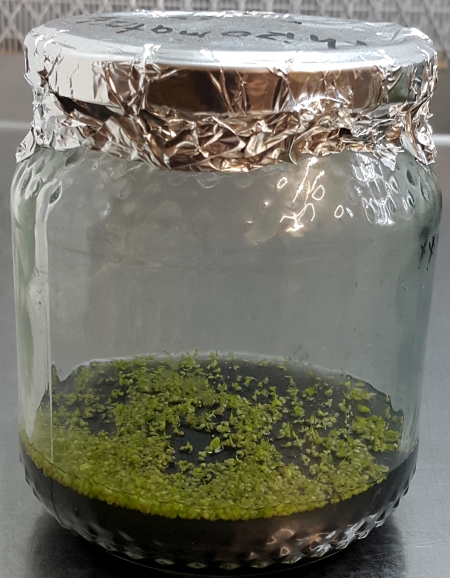
Once the seedlings have reached a certain size, they are transferred to another medium.
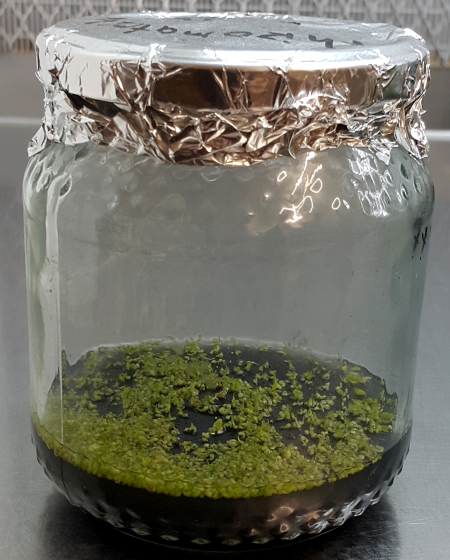
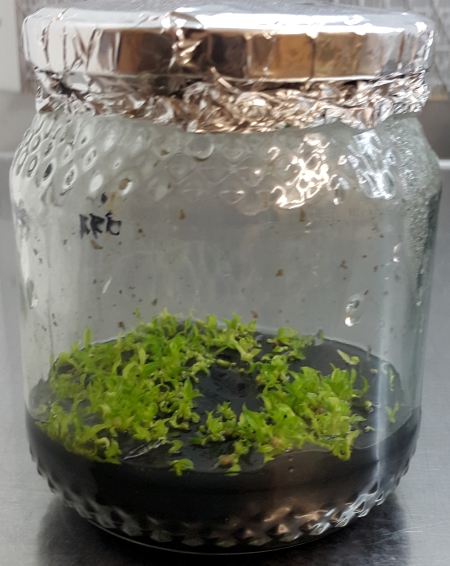
Depending on the species or the growth of the small plants, the orchids are transplanted once or twice.
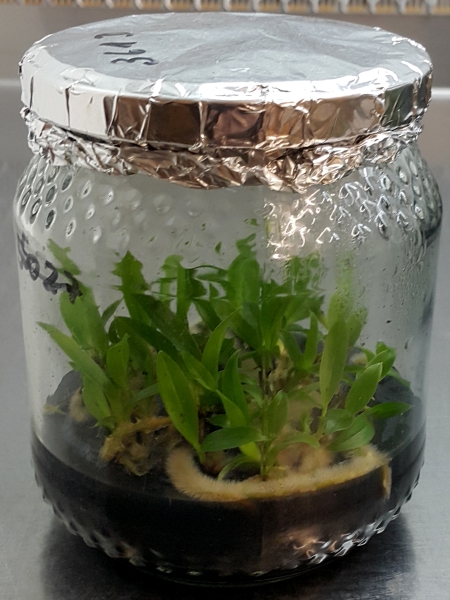
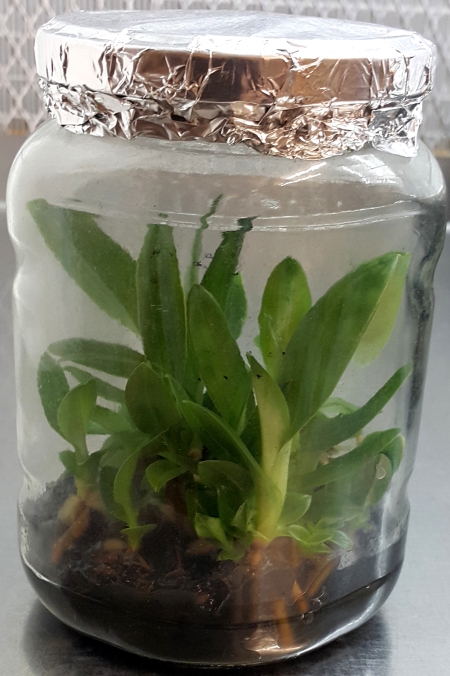
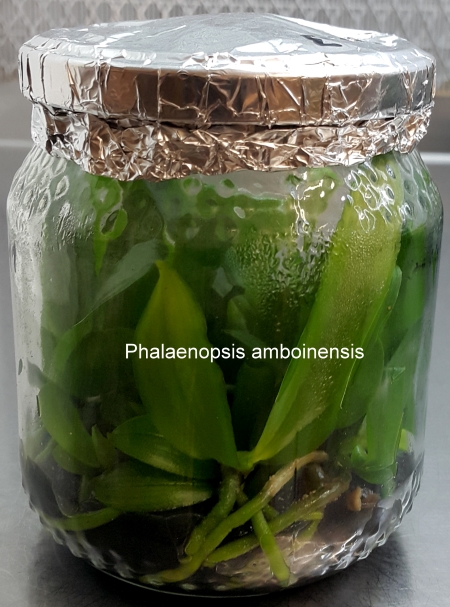
The bottles are now stored for several months in a special room under the most sterile conditions possible at a temperature of 22-25°C so that no fungal infections develop on the culture media.
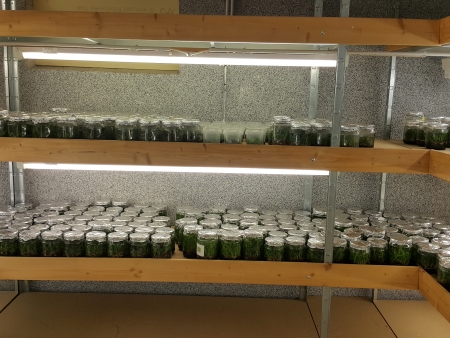
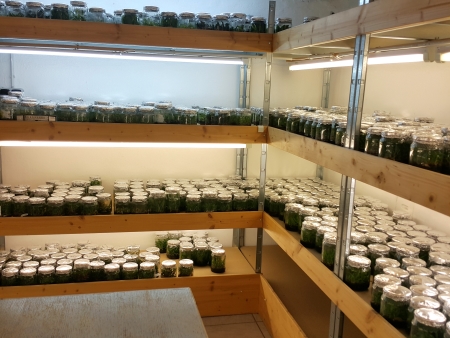
After several months of growth in the sterile bottle, the time comes when the young orchids have to be "flashed out". For this, the old culture medium must be carefully washed out of the glass.
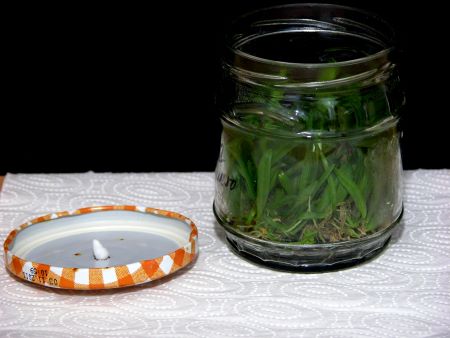

You can read again and again that the young plants should still be disinfected in a chinosol bath - but why should orchids that are taken from a sterile environment still be sterilized?
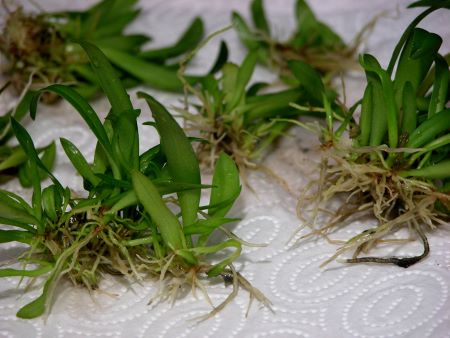
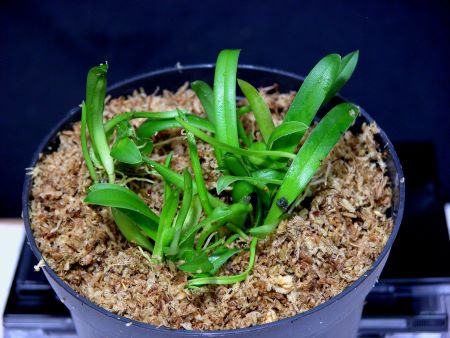
The well-known orchid substrates such as spaghnum moss, fine bark, coconut fibers or peat are suitable as culture substrate for bottled orchid seedlings.
At the Wichmann Orchid Center in Celle (Germany), mykhorizal fungi (Inoq) or fungi from the Trichoderma genus (e.g. Promot) are also added to the various substrates for the young plants, so that the young seedlings receive better protection against harmful organisms. Furthermore, about 5 g of carbonic lime (cacium carbonate) per liter of plant material is added to the substrate so that the pH value of the rather acidic substrate is well buffered.
In order to get optimal cultivation conditions for the young plants, the plants are either planted individually or in small tuffs in the various materials.
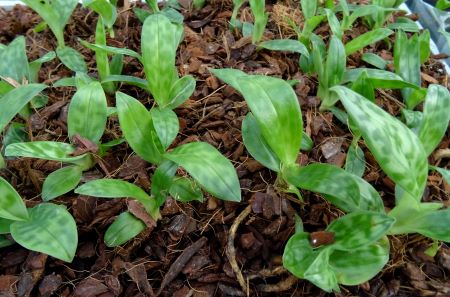
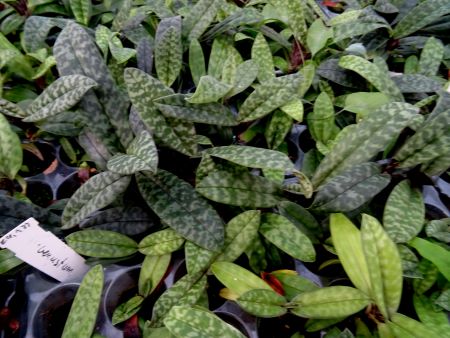
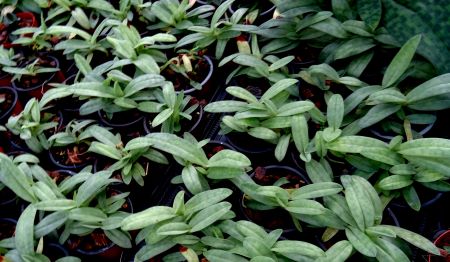
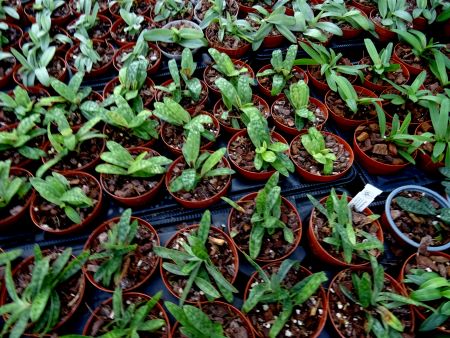
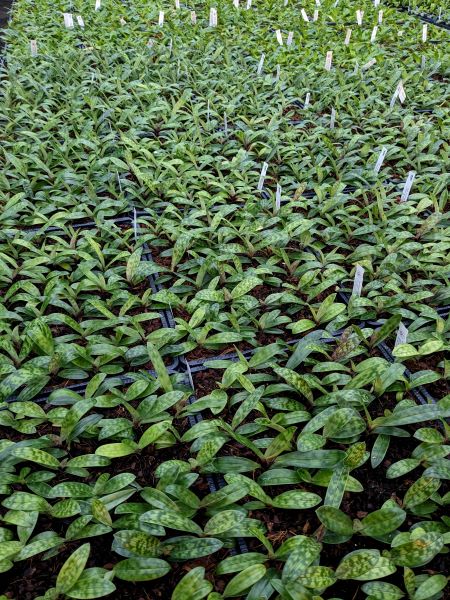
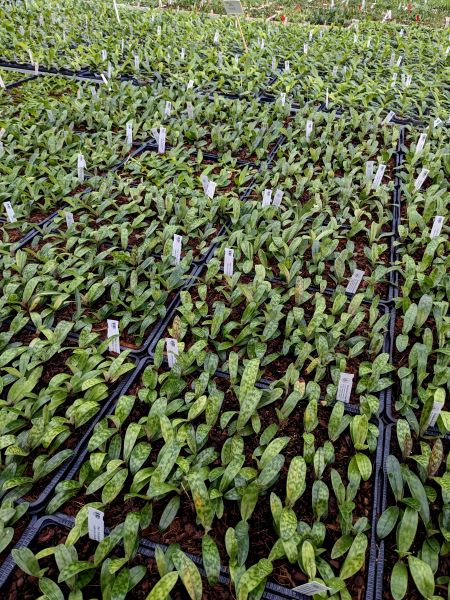
So called plug systems from different manufacturers are also tested.

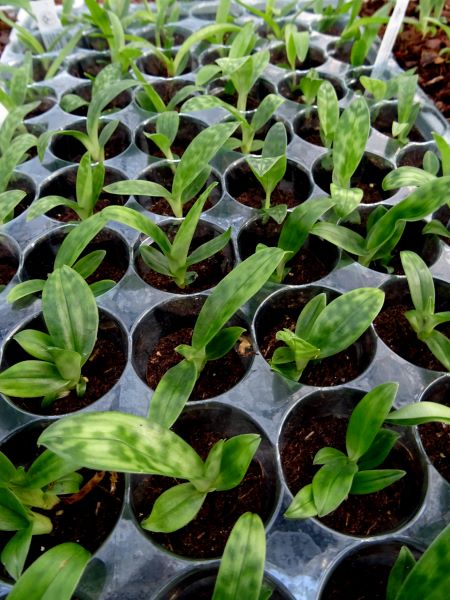
Since different growth rates of the different Paphio species or hybrids can be observed, a conclusive judgment on the possible advantages of using plugs cannot yet be made.
After 6-9 months, the growing seedlings need to be transplanted again. When the plants are big enough, they are planted in pots of 9 in coarser substrate or put back into new young plant substrate.
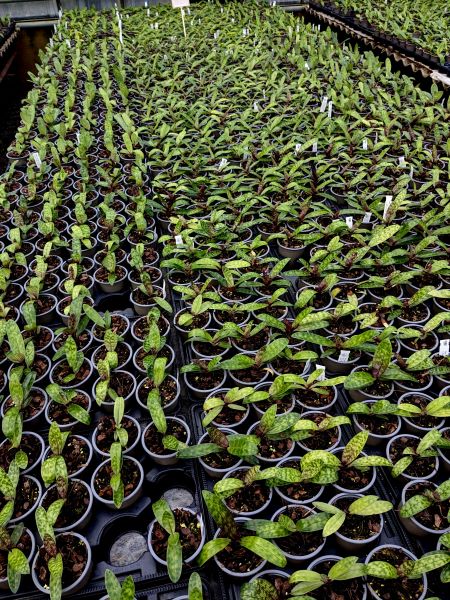
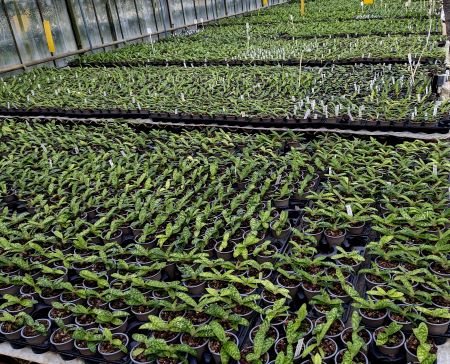
After two years, the first lady's slipper seedlings can bloom.
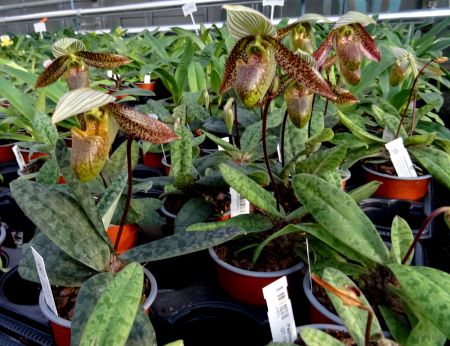
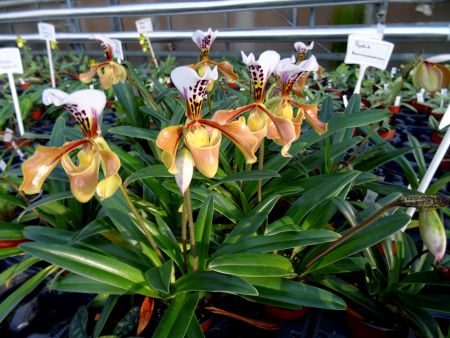
In addition to raising seedlings, paphiopedilums have been successfully propagated by division at the orchid nursery in Wichmann for many decades.
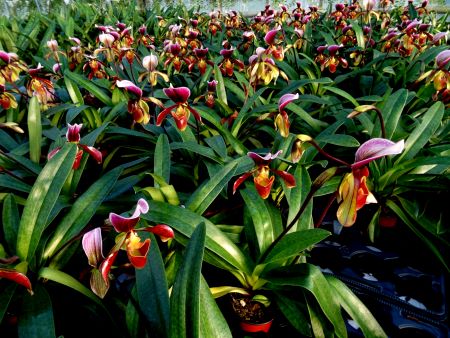
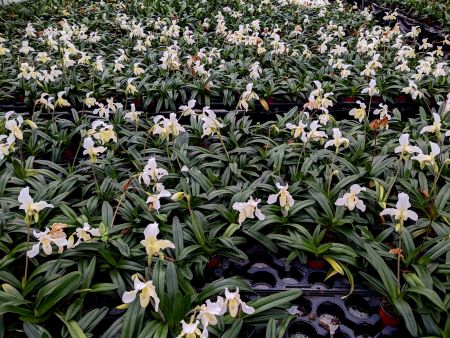
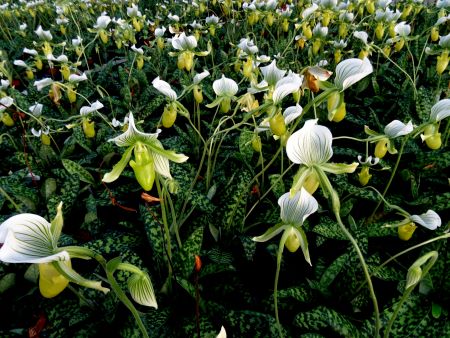
So if you are looking for plants of the genus Paphiopedilum, you should take a look at the homepage of this nursery or visit the nursery in Celle (Germany).
Rückfragen per Mail:


